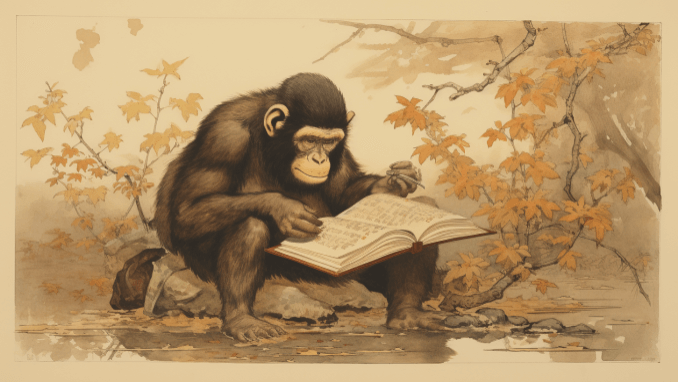
“Man is the storytelling animal – the only creature on earth that told itself stories to understand what kind of creature it was. The story was his birthright, and nobody could take it away.”
This quote from Salman Rushdie sums up really well why stories are so engaging to us, but more than that, there is a deeper idea that we tell story not just because they are fun, or because we like them, but because we need stories to explore who and what we are – in other words stories are tools for learning
Even bad stories grip us. How many times have you sat through a terrible film, just because you needed to know what happened in the end (I’m hoping the answer to that is ‘at least once’, otherwise I’m going to have to face the possibility that it’s only me who does this – and that I’m maybe the only person on the planet who knows what happens at the end of Thor: The Dark World.)
In this article I want to explore the Fantastic and Fabulous in Learning and Facilitation and by the end of this I’m hoping you will have the answer to the most important question of all
“And then what happened”
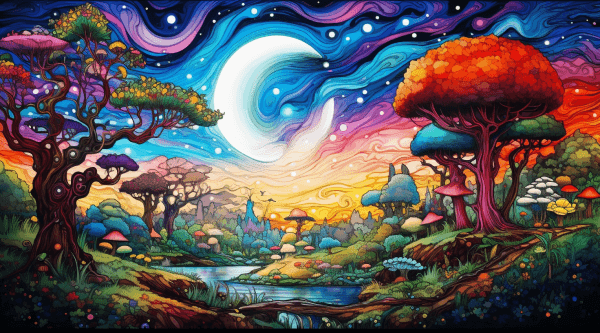
As well as being ‘the storytelling animal’ it’s also often claimed that humans are ‘Wired for God’ – that we are genetically and neurologically predisposed to spirituality
The jury is still out on this one, but it is certainly notable that the magical, religious and supernatural do seem to have a special place in the history of humanity’s attempts to understand, and explain the world, and explore our collective dreams and anxieties – from creation myths, to natural philosophy and alchemy, to the preponderance of UFO invasion movies in McCarthy era America, or radioactive monster movies in post-Hiroshima Japan.
While I was preparing for a recent session on this very topic, I was struggling a bit to find the right words to explain the power for learning that I have found in fairytales, sci-fi, fantasy and tales of the supernatural. And then I bought a book, in my local charity shop – a collection of short stories, edited by Neil Gaiman and Al Sarrantonio. When I got it home, I read Gaiman’s introduction to the book
“It seemed to us that the fantastic can be, can do, so much more than its detractors assume: it can illuminate the real, it can distort it, it can mask it, it can hide it. It can show you the world you know in a way that makes you realise that you’ve never looked at it, not looked at it. G. K. Chesterton compared fantastic fiction to going on holiday – that the importance of your holiday is the moment you return, and you see the place you live through fresh eyes.”
Finding this was perfect, not just because it gave me the words I wanted, but because the way this incident made me feel, makes, very well, the ‘wired for god’ argument.
I’ve read up on the neuroscience of coincidence. I know which cognitive biases are in play – but it still feels like magic when just the right thing turns up at just the right time.
Stories: All New Tales is available on Amazon
To our initial storytelling question, the fantastic and fabulous add a second – “What If..?”
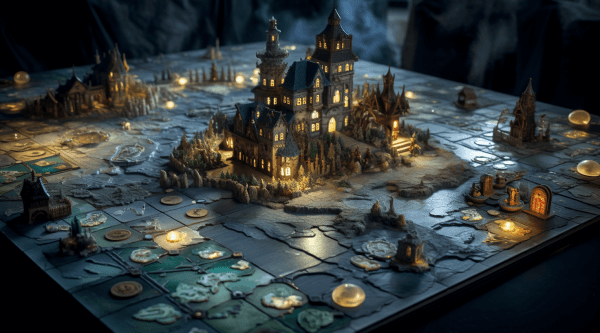
Most of you are reading this article, in this magazine, I imagine, because you believe that games and play have something special to offer in the arena of human learning.
There are obvious links between games and narrative – pretty much every game, except the most abstract will have narrative elements.
I am here to argue that among the already ‘special’ characteristics of games and play, story stands as something even more special, and that furthermore, that the fantastic and fabulous deserves special attention even within that already noteworthy realm of story.
Both stories and games are engines for experience. They both require the participation of a human or humans in order to come into being. Although someone reading a book or listening to the telling of a tale, may outwardly look like a passive consumer – that is far from the truth – they are exercising their imagination, bringing previous experience to bear, and constructing cognitive artefacts for sensemaking – sounds a bit like learning, right?.
If you are involved in games-based learning, and particularly in the design of games and play experiences, you are probably well used to analysing and implementing play in a mechanical way. That is, mapping the mechanics of games to experiences that will effect learning. I think we can view and use narrative (without or without a game structure), in the same way.

So what do I mean by Storytelling ‘mechanics’?
First of all there are Narrative structures – you may have heard, for example of The Heros Journey, or the Touchstone.
Narrative structures drive us down well-worn paths – in learning terms we can use them to guide learners in the directions we want them to go – they create expectations – the ‘threeness’ of fairytales, the beginning middle and end, the alternation of high points and low points in a narrative. Even people who have never heard the term ‘narrative structure’ will be consciously or subconsciously aware of ‘where the story is going’ because they have have been repeatedly exposed to this structures, in books, in fims, in TV.
Then there are various building blocks of story experience which as learning designers, we can use to draw (or obscure) attention, create flow, encourage participation or decision making, elicit emotion and so on. Here are a few:
The McGuffin (the object that explains why the characters do what they do, even though it has no intrinsic plot value), the foreshadowing of Chekhov’s Gun, the happy or sad ending, the twist in the tale, the ghost in the machine, exposition or lack of it – there are 1000s of these mechanics we can employ.
And together they build experiences – obviously there are similarly 1000s of these, but with reference to the fantastic and fabulous – the following are very notable.
- Allegory (including satire)– stories which have more than one level of meaning, most often religious or political. A famous example of this is Animal Farm, which is very different experience when one reads it as a child
- Metaphor (and analogy) – Exploring one idea as if it were (or were like) something else – the Dementors in the Harry Potter books are famously a metaphorical exploration of J K Rowling’s own struggles with depression.
- Archetypes – simplified representations of concepts, often in the form of characters. Fairytales, again, are stuffed with these – the wicked stepmother, the wise woman, the benevolent (or cruel) master, the innocent, the wolf.
From a learning perspective,in the areas that I work, (systemic wicked problems, sustainability and regeneration, diversity and inequality), there are three characteristics of the fantastic and fabulous which I find consistently useful:
Using magic – inviting learners to act as if magic really exists, frees the imagination, gives permission to be really ‘out there’ and reduces the negative impact of reality or ‘what we do now’ on ideation
Asking learners to explore difficult question, particularly when it might ask them to discover truths about themselves they might not want to face – can be largely defused if the conversations can take place outside of reality. For example, a conversation about racism, privilege and unconscious bias is much safer if it takes place in the context of society’s issue with ghosts who have not passed over, rather than a real scenario.
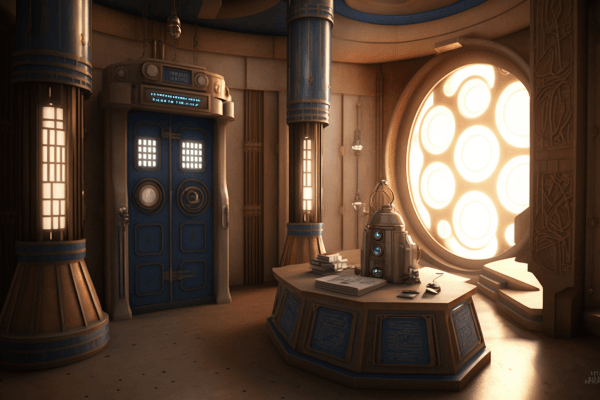
The TARDIS works really well as a representation of the point of this article. Not only is a well-known symbol of the one of the genres I’m recommending for you to play with, but it has one very important characteristic.
Like stories themselves it is bigger on the inside. And I remember on at least one occasion, the Doctor admitting, that he (he was a he at the time), had never been able to fully explore it.
Stories invite their participants to expand their boundaries to their own needs; to colour in the details with their own experiences. But as learning designers we have an even more expansive tool at our disposal – one that provides learners with an effectively infinite playground.
It is often said that you can gauge how well a writer (or filmmaker) has conjured the world in which their stories exist, by looking at the quality of (at least the best of) the fan fiction. Middle Earth, for example, or the United Federation of Planets is so rich with the potential of stories not yet told, that people feel compelled to add their own.
Through Worldbuilding we can invite our learners to tell stories of their own, and like the TARDIS, we will find that we now have something which is far too large to ever be completely explored.
The mechanism I use most often is fantastic and fabulous bottom-up world building; providing small details of a larger world which invite speculation about the larger culture, history, and systems and so on – as relevant to whatever learning is desired. The alternative would be top-down world building – which is a somewhat more time-consuming approach. It’s what happens, for example, when writers on long-running TV series work with a Bible, to ensure they don’t err from the established truths of the fictional world.
If you want to know about Worldbuilding – and particularly top-down WB, there’s no better place to start than Chapter 13 in Volume 2 of Design Unbound by Anne Pendleton-Jones and John Seeley Brown. The story of the Worldbuilding that preceded the making of the film Minority Report is just astounding.
Design Unbound is available on Amazon
We now have a third question to ask our learners. I usually find that my games and gameful activities ask these questions in the reverse order that I have introduced them here.
Introducing learners to the world you have built for them to play in first asks “If this is true, then what else does that tell us?”
Framing the learning in the context of that world then asks “What if…”
And finally, the invitation to exercise their own imagination and creativity “And then what happened?”
I have developed two decks of cards recently which use many of the principles detailed above
These two decks are very much an invitation to tell stories rather than being narratives in themselves. The first – The Museum of Impossible Objects represents some of the exhibits in a mysterious museum. Each card has an image, a label explaining the object, and on the other side of the card, some questions about the object – although your own questions (and answers) are also encouraged. The museum exists in a world where magic exists, where humans are not the only sentient species, where ghosts are an everyday reality and human technology and Fae magic sit side by side, sometimes within single products.
The second is a deck which was allegedly discovered in an architectural dig near Area 51. As nothing is known about the either the images or the text the cards contain, there are several theories as to what the cards might represent and they thus seem to be very versatile in use. Often teams get together to test popular theories about how the cards might work
You are invited to explore these decks (very briefly) now. Please feel free to pause the video at whatever point suits you to try out these two sample activities of how the cards can be used in learning settings.
Activity One (uses 4 cards out of the 52 in the Museum of Impossible Objects deck)
You are the curator of exhibitions. These four exhibits represent your potential choices for a central exhibit for the room you are curating. Pick one. What are the other exhibits which would complement it (either pick from here or from your imagination). What is the story your curated exhibition tells?
Activity Two (uses 4 cards out of the 54 in the Mystery deck)
One popular current theory about these cards is that they represent some kind of tool for using intuition and systems thinking for innovation. A ‘Tarot for Design’ if you like.
As a team you have been tasked with exploring this theory. There are 54 of them – here are a few for you to start with.
Think about the characteristics of the cards (colours, sides, markings, dots etc.) and the possible ways that they could be used (position, orientation, number, connections, number, stacking, turning, instructions, inclusion or exclusion etc.)
Maybe other resources are needed to use them – dice, counters, a board
What ideas do you about how the cards might work in this context?
- James Bore – The Ransomeware Game - 13th February 2024
- Ipsodeckso – Risky Business - 23rd January 2024
- Review – Luma World Games - 15th December 2023

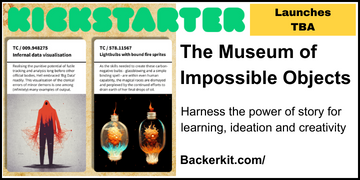


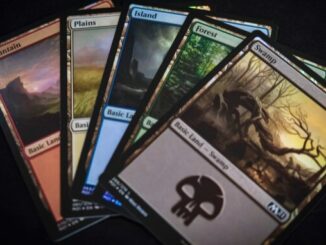

Be the first to comment